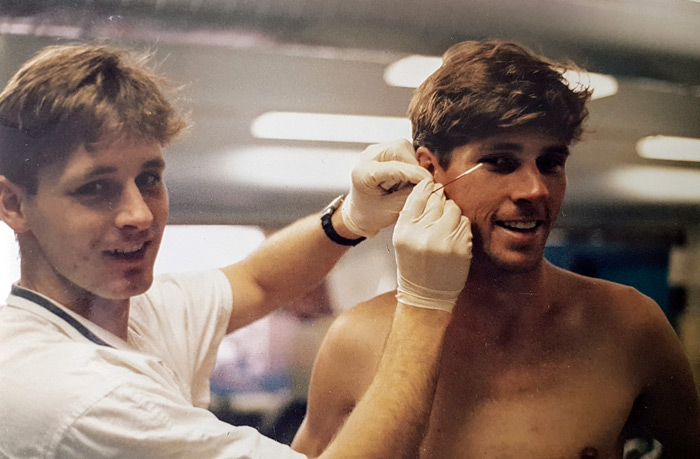Blood analysis is used for many purposes in sports, such as for anti-doping, iron levels or hematocrit, hydration, glucose and lactate level. Analysis of blood samples can also provide details about numerous health parameters.
equipment required: Syringes, needles, cuff, ice and container for storage, bandages, alcohol swabs. For pin-prick measures, a small scalpel or lancet is required.
pre-test: Explain the test procedures to the subject. Perform screening of health risks and obtain informed consent. Prepare forms and record basic information such as age, height, body weight, gender, test conditions. See more details of pre-test procedures.
procedure: A venous blood sample is usually taken from the front of the arm near the elbow joint. The blood can then be sent to a laboratory for analysis. Small pinprick capillary blood samples can be taken from any location, often it is from the finger tip or earlobe.
analysis: A large number of measures can be made from venous blood samples, including glucose, triglycerides, cholesterol, iron. From pinprick samples, lactate and glucose are the common measurements.
comments: Venous blood sampling must be performed by qualified personnel. You can get blood testing done by your doctor or pathology service (this usually requires a doctor's referral).
 collecting an earlobe capillary blood sample
collecting an earlobe capillary blood samplequalifications: Some institutions and hospitals run short phlebotomy courses, which enable the person to gain qualification to take venous blood samples. To take small capillary blood samples using the pinprick method does not require any particular qualification. Training in this is sometimes provided in sport science university courses.
Related Pages
- Taking blood samples for lactate analysis in sports
- Other Health Related Tests for athletes
- How Blood Work Makes Athletes Better
- Other blood tests in medicine: Blood Glucose Test and Blood Cholesterol Test


 Current Events
Current Events